-
- RF Series
- Connector&plug-in unit
- Plug-in unit
- SD card holder
- SIM card holder
- Thimble /wire protector
- Crimping terminal
- Waterproof joint
- 短路帽/跳线帽
- 压线端子胶壳
- 屏蔽夹
- Waterproof and dustproof terminal
- Industrial&automotive&military
发布时间:2021-12-31作者来源:金航标浏览:2225
Digitization is becoming a key element of industrial transformation. At the factory site, it quietly brings a new form through the chimerism of hardware and software. Among them, the electrical, automation and software that used to live in peace have formed a new force through the catalysis of the Internet of things and data analysis, thus promoting the great development of green intelligent manufacturing.
The user's values have promoted the evolution of automation.
Early automation, electrical accounted for a large proportion, especially in detection, regulation and control. At that time, the amount of robots and PLC was very small. Many scenes were electrical circuits, which were controlled by the ability of electric cells.
With the birth of PLC, that is, the birth of Modicon PLC, automation has ushered in great development. Because the electric has some unique advantages of simplicity and strong anti-interference, it still maintains strong vitality. It can be said that the medium and low voltage distribution and automation system have a congenital combination point from the beginning, and they have a strong connection channel.
With the acceleration of automation process, informatization also comes one after another. DCS / PLC and other automation products greatly reduce on-site manual operation. After completing the on-site automation transformation, the valve has changed from manual opening to automatic opening. The manual meter reading through manual on-site measurement has been changed to intelligent upload, and informatization has also started its journey simultaneously. Many information management systems, ranging from maintenance work orders to asset management, have centralized management of the information of various processes. It not only realizes the automatic collection of field data, but also effectively opens up the workflow. The combination of automation and informatization greatly reduces manual operation and improves the operation and maintenance efficiency.
From the stage of traditional automation and informatization, people's decision-making is limited by many data islands. Electrical system and automation are often separated, and the information system also has its own set of architecture. There is little connection between these subsystems. At present, the industrial field is firmly transforming to digital development. In a sense, it can be regarded as an advanced automation. The original automation is more to liberate people from manual labor; Now, digitization liberates some mental work and allows machines to realize it, which greatly increases industrial intelligence.
Due to the strengthening of computing and communication capabilities, data began to accelerate the flow, and heterogeneous data from different sources finally found a fusion point. Electrical, automation and various software systems need to be integrated into an advanced automation strategic platform. The realization of its core value depends on the application of industrial software. However, this integration cannot be combined solely by external purchase. The excellent performance of Apple mobile phone lies not in its hardware itself, but in the one-to-one optimization of hardware and software. This is the power of "digital original ecology". Only the integration from the bottom can produce the most effective optimization.
At the same time, process automation and power distribution management are also being deeply opened up. It includes electrical equipment, automation and software, that is, software and hardware.
Electrical and automatic control can realize the optimization of energy consumption when doing a good job in safety control; It can also be better integrated with process simulation software such as Pro / II to realize the maximum optimization of the process. Both of them are the main battlefield of efficiency improvement most valued by the process industry. The integration of these two field levels makes the subsystem need to have stronger connection ability and self consistent relationship.
Electricity, automation and software work together, just like water, flour and yeast. When yeast began to work, the integration of electrical and automation formed a greater momentum, and software is reshaping the characteristics of hardware. These three proportions are a dynamic adjustment process, but they are not a substitution relationship, but a deep embedding compatible with upward development. It can be said that an important attribute of software is to enhance the value of hardware. Every automation manufacturer cannot ignore this. For example, Schneider Electric has about hundreds of software after completing production integration. These ubiquitous software will cut the gap between traditional departments and fill it one by one. The free flow of data has changed the shape of automation, the characteristics of hardware and the business efficiency of users.
The foundation of digitization is data. Digital collage is the mining of data value. If the data is collected without analysis and insight to affect production decisions, the data is dead. The most data sources still come from equipment. Electrical equipment has also begun to move towards powerful communication functions. A switchgear can connect both network cable and USB interface. Now it is possible to see wireless WiFi, etc. There will be more space for the underlying hardware activation and subsequent automation and informatization.
The control system is changing. The hardware is armed one after another to realize the change of guns. The data of traditional industrial computer or PLC hardware products should be combined with the Internet of things. Many data are either edge computing or on the cloud. This makes it necessary to provide cloud interfaces for industrial computers, PLC, frequency converters, etc. Many automation systems, including electrical equipment, are pursuing "one key configuration". The configuration mode only needs to be called without defining the interface through the communication software. This greatly reduces the on-site commissioning time.
Behind this, in fact, is the reuse of professional knowledge. Many emerging knowledge expert systems, including many decision support software, are directly combined with hardware, which is inseparable from the industrial computer and edge gateway deployed on site. This form of "edge automatic consultant" characterized by knowledge reuse is a thinking that traditional automation hardware needs to keep up.
The biggest foothold of intelligent manufacturing is the integration of it and ot. From the perspective of data flow, it rises from ot to it, and then returns to ot. This flow has been happening in the past. On the surface, this is just the difference between server and cloud. But in essence, it is very different. One is timeliness and the other is computational. Industrial computers not only collect data, but also learn to analyze. Some are used for calculation and analysis, and some are used for simple presentation. Therefore, industrial computer, PLC and other controllers should not only connect the preceding and the following, but also have the intelligent function to transmit the correct information to the correct station (person) in the right way at the right time and place, and realize perception and feedback to form an effective closed loop.
The Modicon m262 PLC of Schneider Electric reflects this development direction and trend. The edge control layer, its boundary, or the speed and width of its expansion up and down, is well suited to the IOT era. M262 PLC can communicate directly to the cloud; For the interconnected product layer at the same level, it also plays a good effect of logic control and motion control controller.
With the development of these technologies, the traditional positioning boundary of PLC, industrial control computer, including some safety modules, is gradually unified or the boundary becomes more blurred with the advent of the digital age.
These changes have also led to changes in product design. Considering the combination of hardware and cloud and the connection and communication requirements of the Internet of things, when designing the control system, automation suppliers also began to have a direct dialogue with cloud infrastructure providers such as Microsoft to develop special applications for hardware at the standard level. Before, negotiations were conducted through a third party. This means that the integration of OT and it is pursuing the most thorough integration at the bottom.
All kinds of automation systems, electrical equipment, even switches, need to have data interfaces and necessary data processing functions. The bottom layer has opened its arms to meet the integration of software.
After completing the collection and storage of information, and then opening up the information flow, there must be a very strong demand and data analysis. For example, for equipment operation and maintenance, it is either an operation optimization strategy based on strict mechanism model, or a combination of process production parameters to achieve the optimal production efficiency of the whole plant through advanced process analysis and other software. Another is the hot big data analysis. These three different methods can make the equipment intervene in advance before obvious failure. This is a great improvement over the past production and operation mode. Among them, data-driven has played an obvious leverage.
In the traditional automation and information architecture, there are many middle tier splints. For example, operation, performance and quality management can be regarded as the three most basic functions of MES. However, if the bottom data cannot reach this layer, the measurement of the operation itself will be greatly reduced.
Data is becoming a more compelling focus than the control system itself. In the past, talking about software system or automation was often based on a project. Now, digital transformation is often from the perspective of a factory or even a group. In the past, PLC or control system was often the core of the whole project, but now it has moved to the business driven by data flow as the core.
In other words, from the perspective of large digital projects, PLC is no longer the core, but more importantly, it focuses on how to control the whole plant, how to operate machines and how to manage energy consumption. When these data originally locked in their own rooms freely broke through the wall of the information system and gathered in the lobby, the data chorus had a new melody.
Taking the most common cement industry as an example, more than 60% of its total production cost comes from energy consumption. Cement is the king of energy consumption in the building materials industry, which accounts for about 2% of the world's energy consumption and 5% of the world's carbon dioxide emissions. Now, China has officially announced that it will achieve the arduous goal of "carbon peak in 2035 and carbon neutralization in 2060". This blade like sharp cold will be felt first by the cement industry. Qilianshan cement plant has taken the lead in action. In the past, we often faced such difficulties in production: energy consumption and production progress are like sending them at the same time with two telegraph passwords, which can not be communicated. Even though the management clearly knows that there is a waste of energy, it is helpless because it is unable to know the operating conditions of the equipment in real time. The optimization of equipment operation depends on experience. Taking clinker firing as an example, kiln operators often need to observe the dynamics of hundreds of process parameters at the same time. Once there is a change, it is necessary to make a judgment within a few seconds and give the adjustment command. This way of controlling the optimal production by relying on the old master's spirit and experience has come to a dead end. No matter how advanced the automatic control system is, it won't help.
The management of the cement plant has realized that only when the energy management system for monitoring hydropower and gas is fully connected with the data of automation equipment and the equipment is in the optimal operation state, can the energy-saving password be really opened. Finally, the launch of the digital system according to this idea reduces the standard coal consumption of clinker by 1kg and the process power consumption by 0.7 degrees / ton. In the three years since its launch, it has never been out of control due to misoperation. The effects of automation and energy consumption are like a combination of two swords.
Customers no longer focus on the number of points they can control in the past, but the value brought by the data obtained from the hardware, especially the data on the production line. Since business driven data flow has become the core, hardware also needs to adapt to this change. The performance design and safety certification of frequency converter and touch screen should be developed around the aggregation and dispersion of data flow.
It is not only the upgrading of equipment and wire control system, but also the use of big data resources to realize powerful auxiliary decision-making. Cement plant will no longer be a factory that completely depends on human organization and production, but an intelligent hybrid of complex man-machine combination.
Fast moving consumer goods, such as food and beverage, CPG and medicine, often present a mixed production form. Front end processing is a process, involving DCS control system, which is mostly used for analog quantity control; The packaging and logistics of the later process show discrete characteristics, and programmable control PLC is needed to complete logic control, sequence control and so on. These two different controllers are like two test tubes, one for oil injection and the other for water injection. Each has its own division of labor and is not the same. One has higher real-time requirements, which is often used in single machine control; One is relatively closed, emphasizing multi device cooperation and cooperating with mechanism model.
In order to make the engineering and commissioning of the hybrid industry more efficient, we need a platform that takes into account the advantages of DCS and PLC, which is a test of the flexibility of the control system. The same software programming platform is playing such a role. Like the U-shaped connector, the functions of DCS and PLC are connected together. Ecostruxure process control expert released by Schneider Electric is such a connector type control system, which absorbs the characteristics of PLC and DCS and realizes their respective advantages. Whether it is the front-end process characteristics or the discrete characteristics to the back-end, there can be a complete set of solutions.
The boundary between DCs and PLC is gradually blurred, and the era of product series formed by a set of basic technical architecture is coming. The supporting software has gradually had more in common.
If the first three angles are the microscopic capability of the microscope, the operator should have a telescope like telephoto capability, that is, to realize the digital delivery of the factory. From the perspective of the longer plant life cycle, thousands of elements of the enterprise are gathered under one framework. In the past, there were generally dozens of isolated systems nested with each other. It also means that so many hardware and software on site need to be controlled by the same architecture, which was once a utopian concept.
However, as a result of digitization, the emergence of platform digital delivery is natural. The platform is like the steel skeleton of a building. The colorful spatial layout can be completed freely on it. The automation platform determines all subsystems attached to the, which has inherent self consistency.
Now, with the help of the connection of software and the demand for the free flow of data, enterprise users need to connect the information systems of various dimensions for connected management. Platformization will have one of the most important choices.
The birth of a factory starts from the three-dimensional factory at the design end, then passes through the builder, and finally transfers it to the owner for operation and maintenance services. This involves different organizations, switching in different time and space, and there must be a large loss of equipment information, spare parts information, construction information, etc. In the past, when a medium-sized petrochemical plant was delivered, it may be the data of several trucks. The amount of drawing data is very large; Moreover, the archived data of these drawings are difficult to maintain after delivery. Because the device is constantly changing, after one or two years, the accuracy of device data will decline greatly, only about 50% of the accuracy, whether it system or drawing data. Without a telescope, I really can't find these grass snake gray lines. Digital delivery attempts to unify the information flow so that the data under different nodes can be recombined. When delivering the factory model, the factory construction software synchronously leaves a digital twin space, which organically forms a logical self consistency in the digital world with the digital twin equipment provided by many other suppliers. When running, static data such as drawings and documents can be effectively combined with the real-time dynamic data of the control system, so as to provide the owner with the digital factory with the greatest value.
This is an ambitious attempt. These all need a platform support.
Users don't waste more time. They want to use a platform to unify mottled and diverse equipment and systems, which has become the biggest driving force for the construction of digital factories. Users also began to migrate, and the stickiness of the existing brand and the formed value recognition also accelerated the speed of integration. For example, in the traditional pharmaceutical industry, the SCADA software of InTouch has been integrated into the production system. Now, with the upgrading of these software to the system platform (aveva) and driving the synchronous follow of the underlying control system such as Modicon PLC, we can seamlessly cut into the ecostruxure process control expert based on the software system. It can be said that the overall solution of "software first, hardware synchronization and platform bottom" is easier to hit the heart of users.
With the expectation of the value of digital transformation, the schemes required by users are often the joint schemes of electrical equipment, automation system, equipment and software. Only through the ability of consulting and providing the overall scheme will users have a clearer judgment on the expectations of the digital chemical plant. This is not only an integrated advantage, but also a step that traditional automation manufacturers are optimizing.
In a chemical enterprise in Hubei, the earliest SIS safety system adopted Triconex of Schneider Electric. However, a simple safety hardware system cannot be effectively combined with other key indicators, such as energy consumption, operation and maintenance, etc. In this case, the digital platform based on platform system shows unique advantages. It provides more convincing solutions for smart factories. Software is like Cupid's small arrow, which is easier to hit the central door. This enterprise, together with the safety system, distribution automation and some control systems, has adopted the platform strategy to form an integrated service.
Brecht, the German dramatist who created the three performance systems of world drama, once said that people who advocate progress often have too superficial views on what already exists. In other words, when new things come, we often give the magical power of flying mountains outside the sky. However, in those traditional basic plates, they also have great growth vitality. Things are evolving themselves. Reborn, automation itself is running fast and remains the key backbone in the big wave of digital chemical plant.
Disclaimer: This article comes from the InternetReprinted from "intellectual automation", which supports the protection of intellectual property rights. Please indicate the original source and author. If there is infringement, please contact us for deletion.
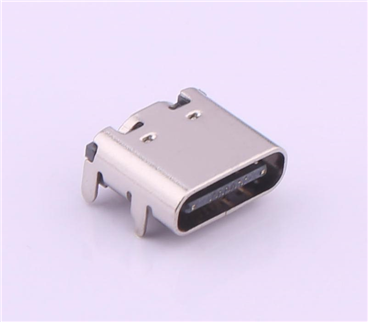
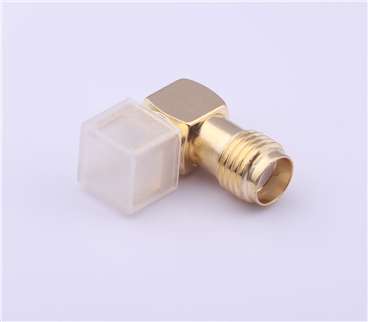
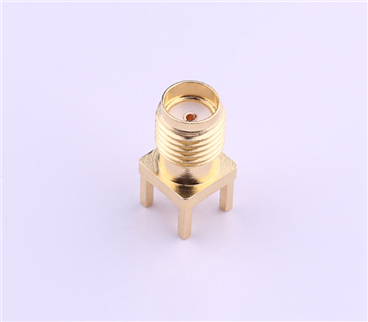
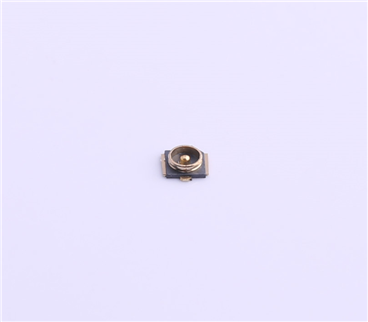
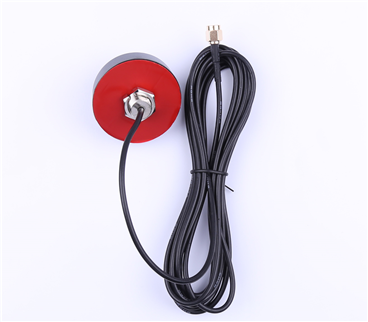
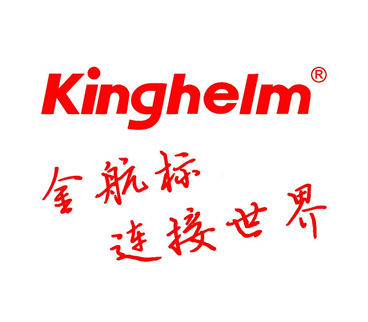





Copyright © Shenzhen Kinghelm Electronics Co., Ltd. all rights reservedYue ICP Bei No. 17113853
